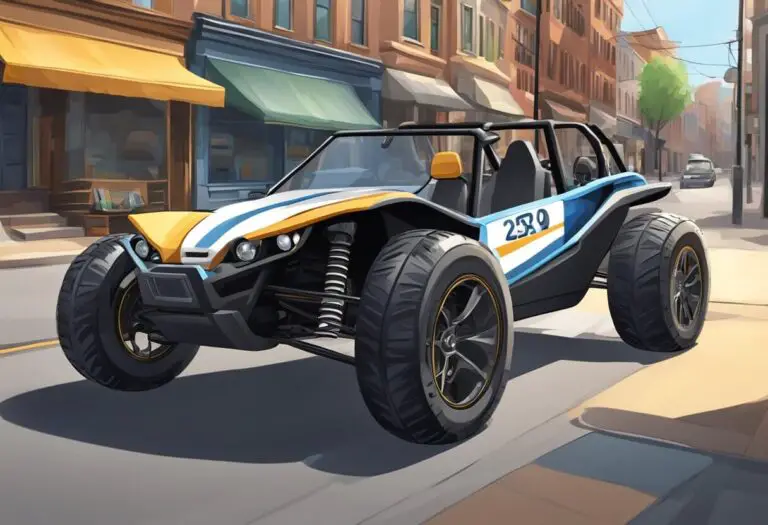Street Legal Dune Buggy: Everything You Need to Know
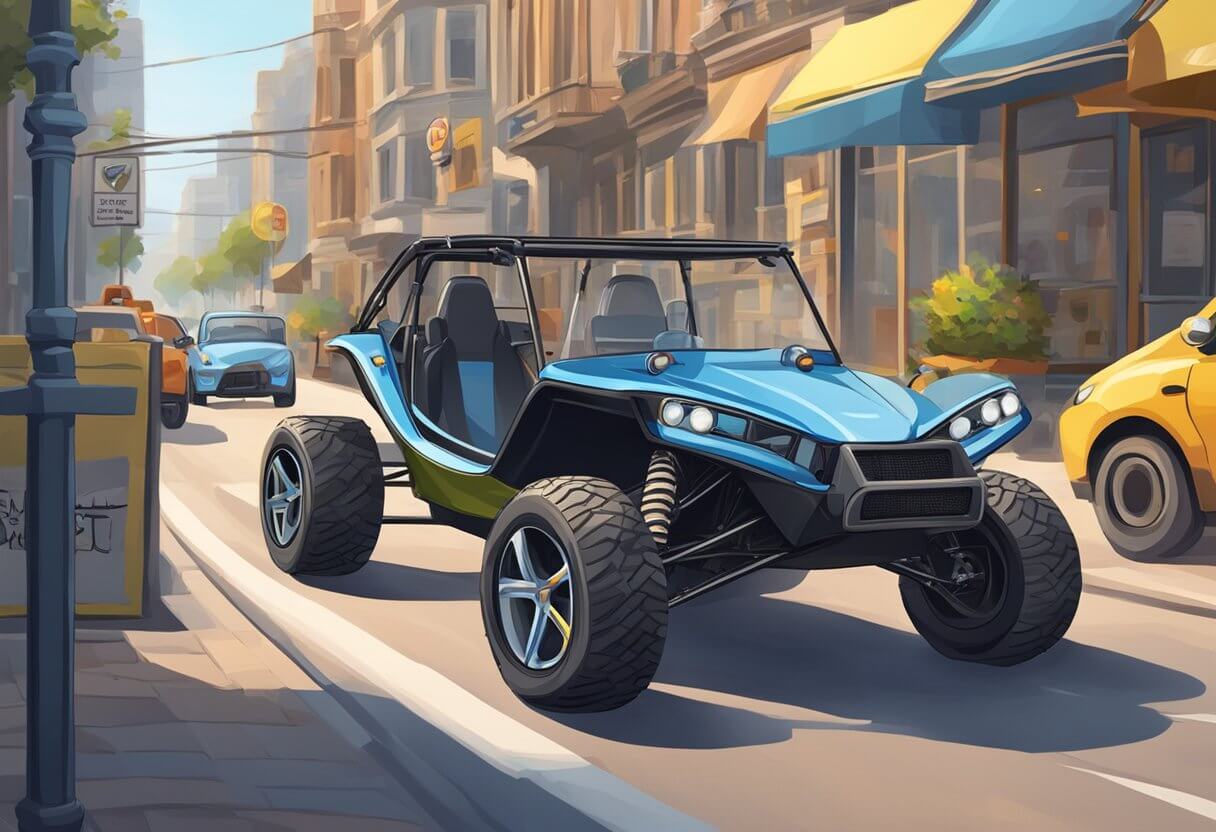
Street legal dune buggies are a popular choice for off-road enthusiasts who want to take their vehicles on public roads. These vehicles are designed to be both safe and fun, with features like roll cages, seat belts, and powerful engines. They are also lightweight and agile, making them ideal for navigating rough terrain.
To be considered street legal, a dune buggy must meet certain requirements. These requirements vary by state, but typically include things like headlights, turn signals, and brake lights. The vehicle must also pass a safety inspection and meet emissions standards. Once it has been certified as street legal, the owner can register it with the DMV and obtain license plates.
There are many different types of street legal dune buggies available, ranging from classic Volkswagen-based models to modern, high-performance machines. Some are designed for off-road use only, while others can be driven on both pavement and dirt. Regardless of the specific model, however, all street legal dune buggies share a common goal: to provide an exciting, safe, and legal way to explore the great outdoors.
Overview of Street Legal Dune Buggies
A street legal dune buggy is a type of off-road vehicle that has been modified to meet state requirements for legal operation on public roads. These vehicles typically feature a lightweight tubular frame, powerful engines, and large off-road tires, making them perfect for navigating challenging terrains.
Street legal dune buggies, also known as sand rails, are popular among off-road enthusiasts who want to explore both off-road trails and city streets. They offer a unique combination of speed, power, and agility that is hard to match with other types of vehicles.
To make a dune buggy street legal, it must meet certain requirements such as having proper lighting, turn signals, and mirrors. Additionally, the vehicle must pass a safety inspection and meet emissions standards.
There are many different types of street legal dune buggies available on the market, ranging from classic Volkswagen-based buggies to modern, high-performance sand rails. Some of the most popular models include the Meyers Manx, the Berrien Buggy, and the Rage Comet.
Legal Requirements
When it comes to making a dune buggy street legal, there are several legal requirements that must be met. This section will outline the most important legal requirements that a dune buggy owner must comply with.
Vehicle Registration
The first step in making a dune buggy street legal is to register the vehicle with the local Department of Motor Vehicles (DMV) or equivalent agency. The registration process typically involves providing proof of ownership, obtaining a title, and paying a registration fee. In addition, the dune buggy must pass a safety inspection before it can be registered.
Safety Standards
Safety is a top priority when it comes to making a dune buggy street legal. In order to ensure that the vehicle is safe to operate on public roads, it must meet certain safety standards. These standards typically include requirements for headlights, taillights, turn signals, mirrors, brakes, and seat belts. The specific safety standards that a dune buggy must meet may vary depending on the state in which it is registered.
Emissions Compliance
In addition to meeting safety standards, a street legal dune buggy must also comply with emissions regulations. This typically involves installing a catalytic converter and other emissions control devices. The specific emissions requirements that a dune buggy must meet may vary depending on the state in which it is registered.
Insurance Requirements
Finally, a street legal dune buggy must also be insured in order to be legally operated on public roads. The insurance requirements for a dune buggy may vary depending on the state in which it is registered, but typically include liability coverage for bodily injury and property damage.
Overall, making a dune buggy street legal requires careful attention to legal requirements and safety standards. By complying with these requirements, dune buggy owners can enjoy the thrill of off-road driving while also safely and legally operating their vehicles on public roads.
Dune Buggy Modifications

When it comes to making a dune buggy street legal, there are a number of modifications that need to be made to ensure that the vehicle meets the necessary safety requirements. Here are some of the most important modifications that should be considered:
Lighting Systems
One of the most important modifications that needs to be made to a dune buggy is the installation of a proper lighting system. This includes headlights, taillights, turn signals, and brake lights. These lights are necessary to ensure that the vehicle is visible to other drivers on the road, especially at night or in low-light conditions. LED lights are a popular choice for dune buggies as they are energy-efficient, long-lasting, and provide excellent visibility.
Seat Belts and Restraints
Another important modification that needs to be made to a dune buggy is the installation of proper seat belts and restraints. This is essential to ensure that the driver and passengers are properly secured in the event of an accident. In most cases, a three-point seat belt system is recommended, as it provides the best protection in the event of a collision.
Windshield and Mirrors
A windshield and mirrors are also necessary modifications for a street legal dune buggy. The windshield helps to protect the driver and passengers from wind, dust, and debris, while the mirrors provide essential visibility to the rear and sides of the vehicle. In most cases, a windshield made from shatter-resistant glass or plastic is recommended, and mirrors should be adjustable to provide the best possible view.
Mufflers and Noise Control
Finally, a muffler and noise control system are necessary modifications for a street legal dune buggy. This is important to ensure that the vehicle meets local noise regulations and does not disturb other drivers or residents in the area. In most cases, a muffler that reduces noise levels to below 90 decibels is recommended, and additional noise control measures may be necessary depending on local regulations.
State-Specific Regulations

California
In California, dune buggies are required to meet certain requirements to be considered street legal. According to CVC Section 24008.5, the buggy must have a factory-built body or a body that resembles a factory-built body. Additionally, the buggy must have seat belts and a windshield, and it must be equipped with turn signals, brake lights, and headlights. The buggy must also pass a smog check and have a valid license plate.
Florida
In Florida, dune buggies are considered street legal as long as they meet certain requirements. The buggy must have a windshield, seat belts, and working headlights, taillights, and turn signals. Additionally, the buggy must have a horn, and it must be equipped with a muffler. The buggy must also be registered and insured.
Texas
In Texas, dune buggies are considered street legal as long as they meet certain requirements. The buggy must have a windshield, seat belts, and working headlights, taillights, and turn signals. Additionally, the buggy must have a horn, and it must be equipped with a muffler. The buggy must also be registered and insured.
Arizona
In Arizona, dune buggies are considered street legal as long as they meet certain requirements. The buggy must have a windshield, seat belts, and working headlights, taillights, and turn signals. Additionally, the buggy must have a horn, and it must be equipped with a muffler. The buggy must also be registered and insured.
It is important to note that regulations can vary from state to state, and it is crucial to understand the specific laws and requirements in your area before operating a dune buggy on public roads.
Inspection and Certification Process
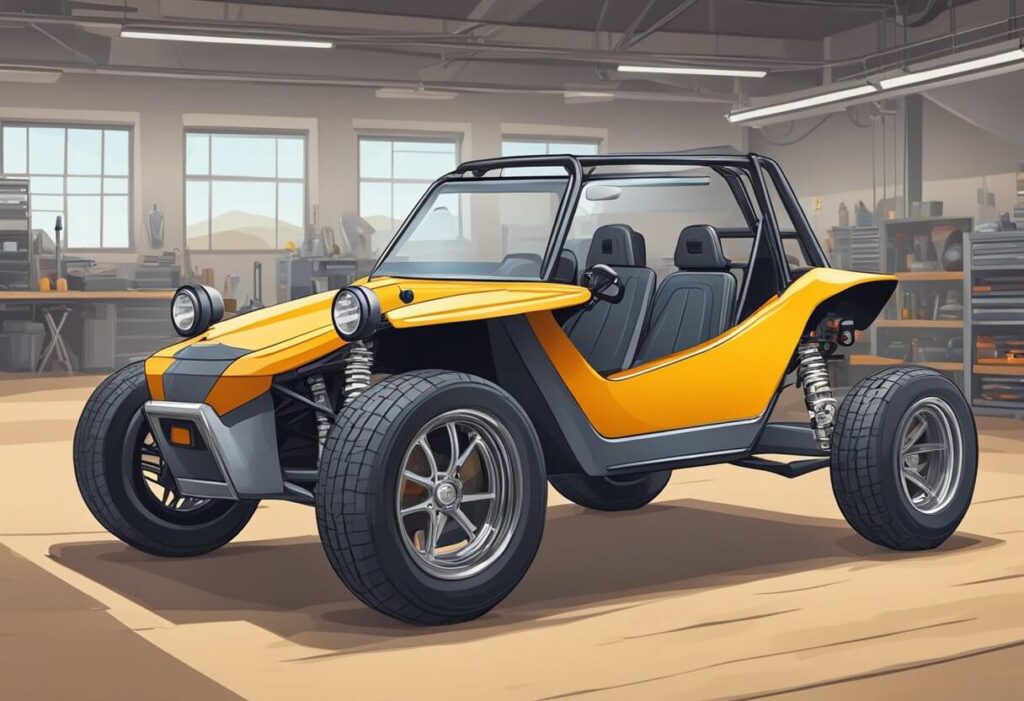
Before a dune buggy can be considered street legal, it must pass a thorough inspection process. This process is designed to ensure that the vehicle meets all safety standards and emissions requirements. The inspection process can vary depending on the state, but typically involves the following steps:
- Safety Inspection: A multi-point vehicle safety inspection is often required. This inspection will check the vehicle’s brakes, lights, tires, steering, suspension, and other safety features to ensure that they are in good working order.
- Emissions Inspection: In some states, an emissions inspection is also required. This inspection checks the vehicle’s exhaust system to ensure that it meets emissions standards.
- Certification: Once the vehicle has passed both the safety and emissions inspections, it will be issued a “Certificate of Compliance.” This certificate is required in order to register the vehicle with the DMV and obtain license plates.
It’s important to note that the inspection and certification process can be time-consuming and expensive. However, it’s necessary in order to ensure that the vehicle is safe to operate on public roads.
In addition to the inspection and certification process, there are other requirements that must be met in order for a dune buggy to be considered street legal. These requirements can vary depending on the state, but may include:
- Valid VIN: The vehicle must have a valid Vehicle Identification Number (VIN).
- Working Parking Brake: The vehicle must have a working parking brake.
- Bumpers: The vehicle may be required to have bumpers.
- Splash Guards: The vehicle may be required to have splash guards to prevent mud and debris from being thrown onto other vehicles.
- Suspension Travel Limits: The vehicle’s suspension may be required to meet certain travel limits to ensure that it can safely navigate on-road conditions.
By meeting these requirements and passing the inspection and certification process, a dune buggy can be considered street legal and can be safely operated on public roads.
Driving and Usage Restrictions
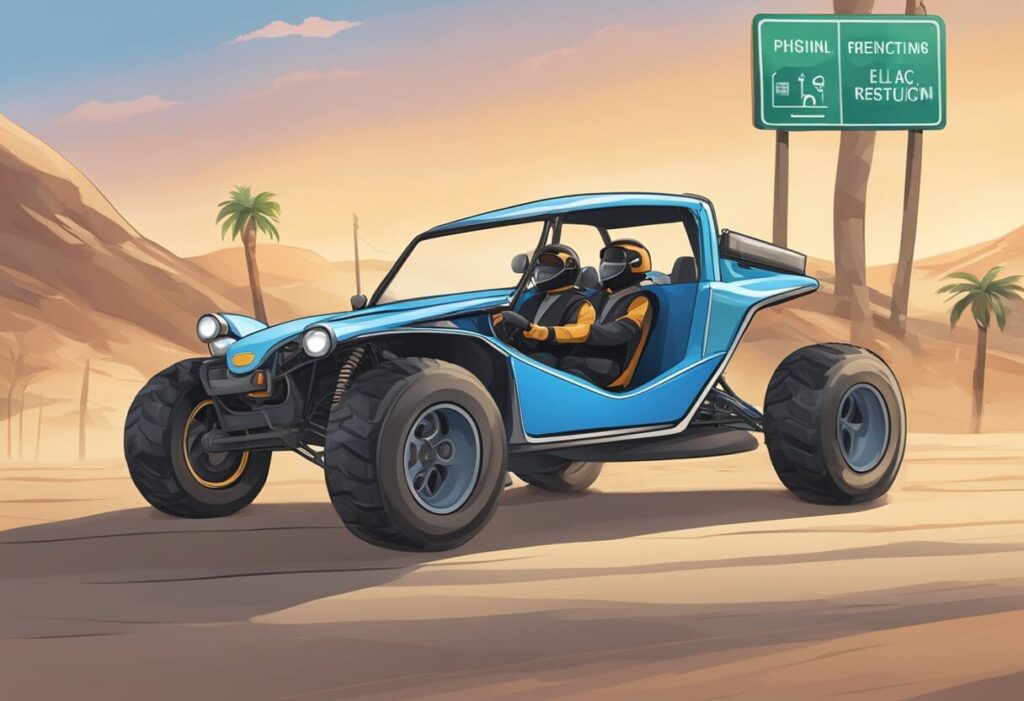
While some states allow dune buggies to be driven on public roads, there are still restrictions that drivers need to be aware of in order to stay within the law. Here are some of the common restrictions that apply to street legal dune buggies:
- Speed limits: Depending on the state, dune buggies may be subject to lower speed limits than regular vehicles. It is important to follow posted speed limits to avoid getting pulled over or ticketed.
- Seat belts: All passengers in a dune buggy must wear seat belts at all times while the vehicle is in motion. This is for safety reasons and failure to comply can result in fines.
- Headlights and taillights: Dune buggies must have functional headlights and taillights in order to be driven on public roads. It is important to check these regularly to ensure they are in good working order.
- Turn signals: Some states require dune buggies to have turn signals in order to be driven on public roads. Check with your local DMV to see if this applies to you.
- Off-road use: Even if your dune buggy is street legal, it is important to remember that it is still primarily an off-road vehicle. Driving on rough terrain or in extreme weather conditions can be dangerous and can cause damage to your vehicle.
By following these restrictions and staying within the law, you can safely enjoy your street legal dune buggy on public roads.
Maintenance and Upkeep
Maintaining a street legal dune buggy is crucial to ensure its longevity and optimal performance. Here are some tips to keep in mind when it comes to maintenance and upkeep:
Regular Inspections
It is recommended to inspect the dune buggy regularly to identify any potential issues before they become major problems. This includes checking the brakes, tires, suspension, and steering components. Additionally, it is important to check the oil, fluids, and filters regularly and replace them as needed.
Cleaning
Cleaning the dune buggy after each use is essential to prevent dirt, sand, and debris from accumulating and causing damage. Use a soft cloth or brush to clean the engine and other accessible parts. Avoid using high-pressure water as it can damage the electrical components.
Lubrication
Lubrication is necessary to keep the dune buggy running smoothly. It is recommended to lubricate the chassis, suspension, and steering components regularly. Use a high-quality lubricant that is suitable for the specific components.
Storage
When not in use, it is important to store the dune buggy properly to prevent damage from weather and other environmental factors. Store it in a dry, covered area and use a cover to protect it from dust and debris.
By following these tips, owners can ensure their street legal dune buggy remains in optimal condition for years to come.
Buying Guide
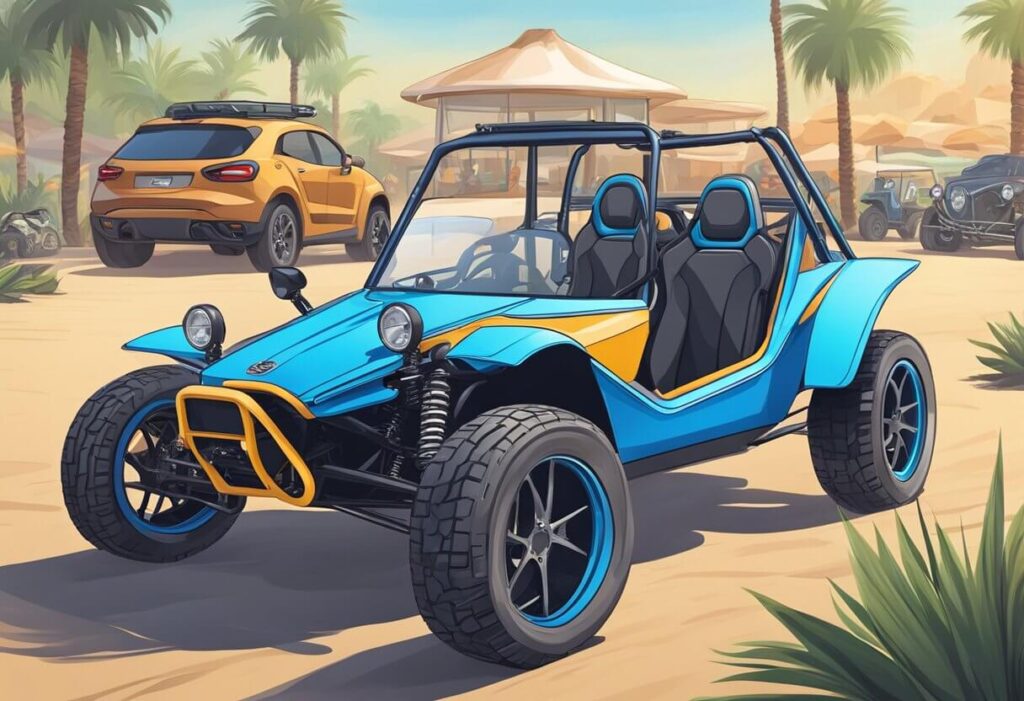
New vs. Used
When choosing between a new or used street legal dune buggy, there are a few factors to consider. New dune buggies typically come with a higher price tag but offer the latest features and technology. They also come with a warranty, which can provide peace of mind for the buyer.
On the other hand, used dune buggies can be more affordable and offer a wider range of options. However, buyers should be cautious when purchasing a used dune buggy and thoroughly inspect the vehicle for any signs of wear and tear or damage.
Key Features to Consider
When choosing a street legal dune buggy, there are several key features to consider. These include:
- Engine power: The engine power determines the speed and performance of the dune buggy. Buyers should choose an engine that is powerful enough to handle the terrain they plan to drive on.
- Safety features: Safety features such as seat belts, roll cages, and headlights are essential for any street legal dune buggy. Buyers should ensure that the dune buggy they choose has all the necessary safety features.
- Suspension: The suspension system is important for ensuring a smooth ride on rough terrain. Buyers should choose a dune buggy with a suspension system that can handle the type of terrain they plan to drive on.
- Tires: Tires are an important component of any dune buggy. Buyers should choose tires that are suitable for the terrain they plan to drive on and that offer good traction and durability.
By considering these key features, buyers can choose the best street legal dune buggy for their needs.



